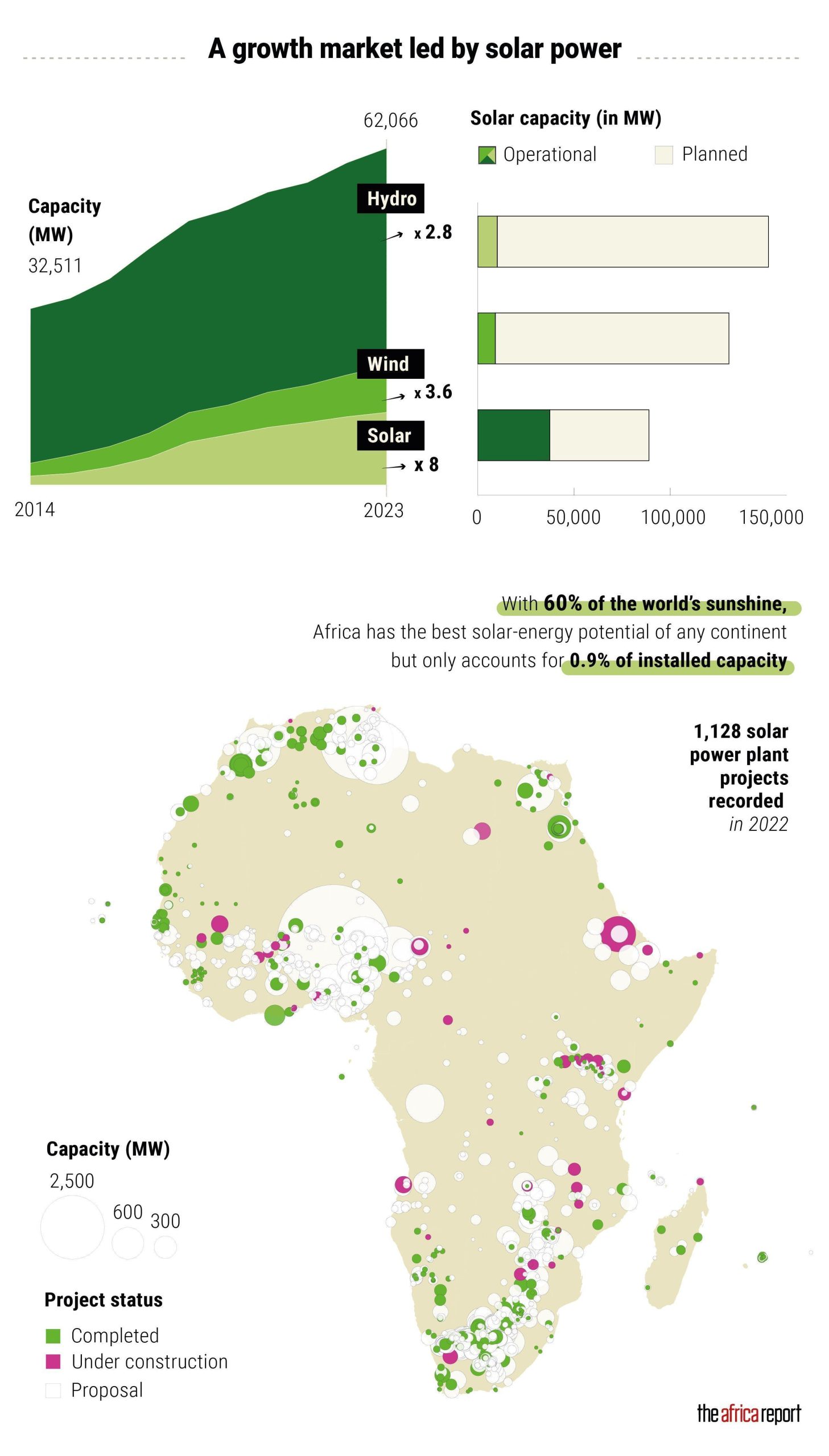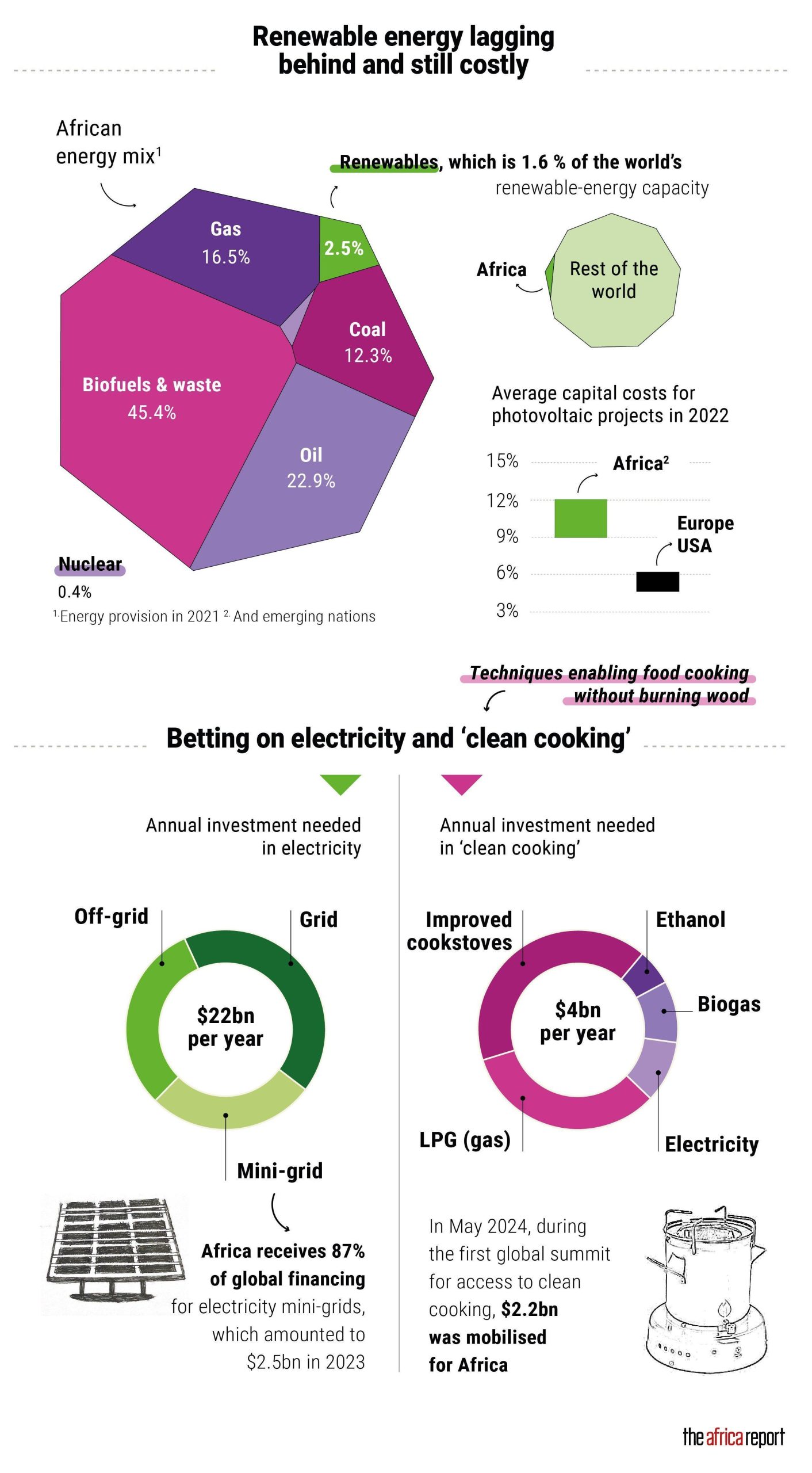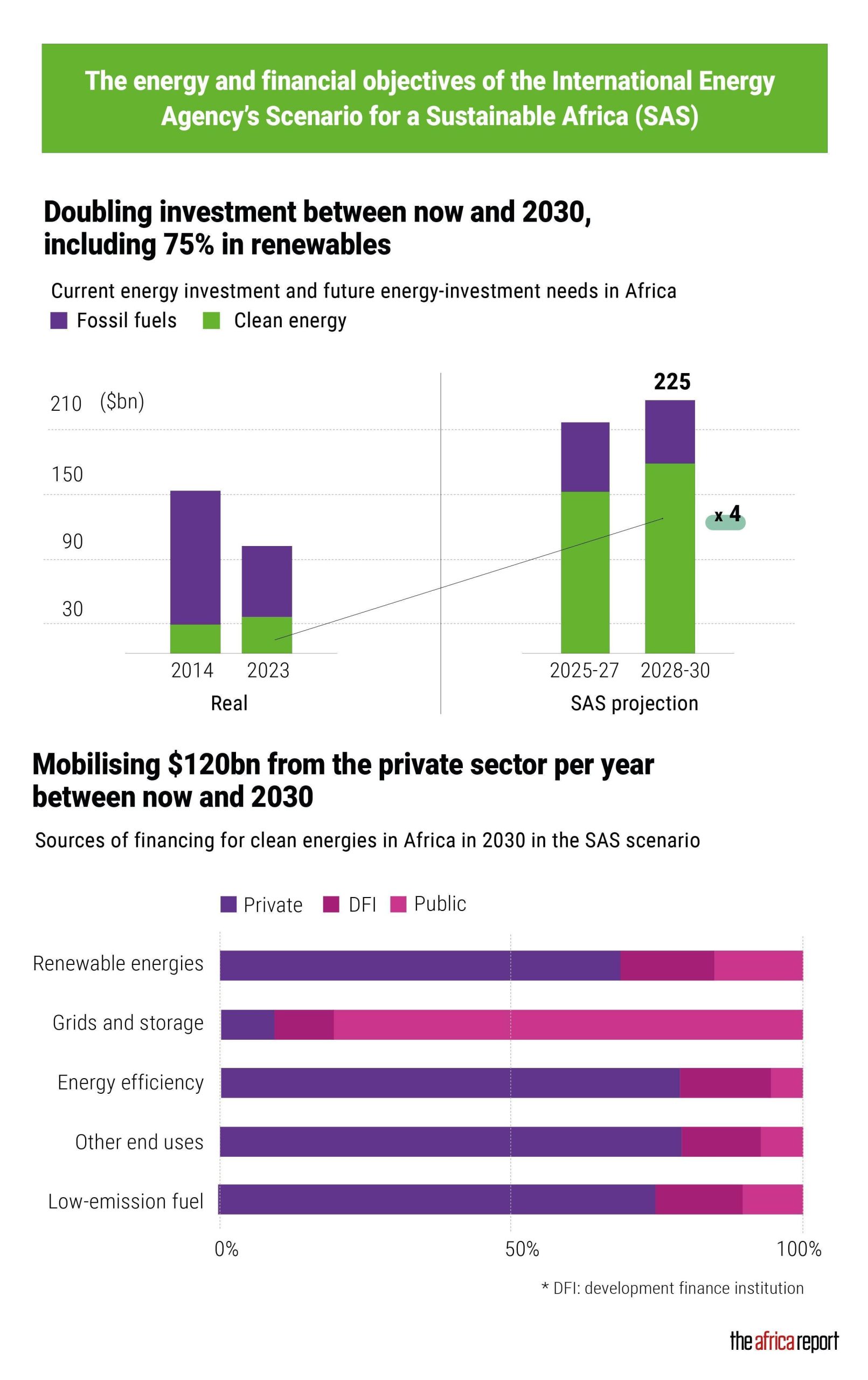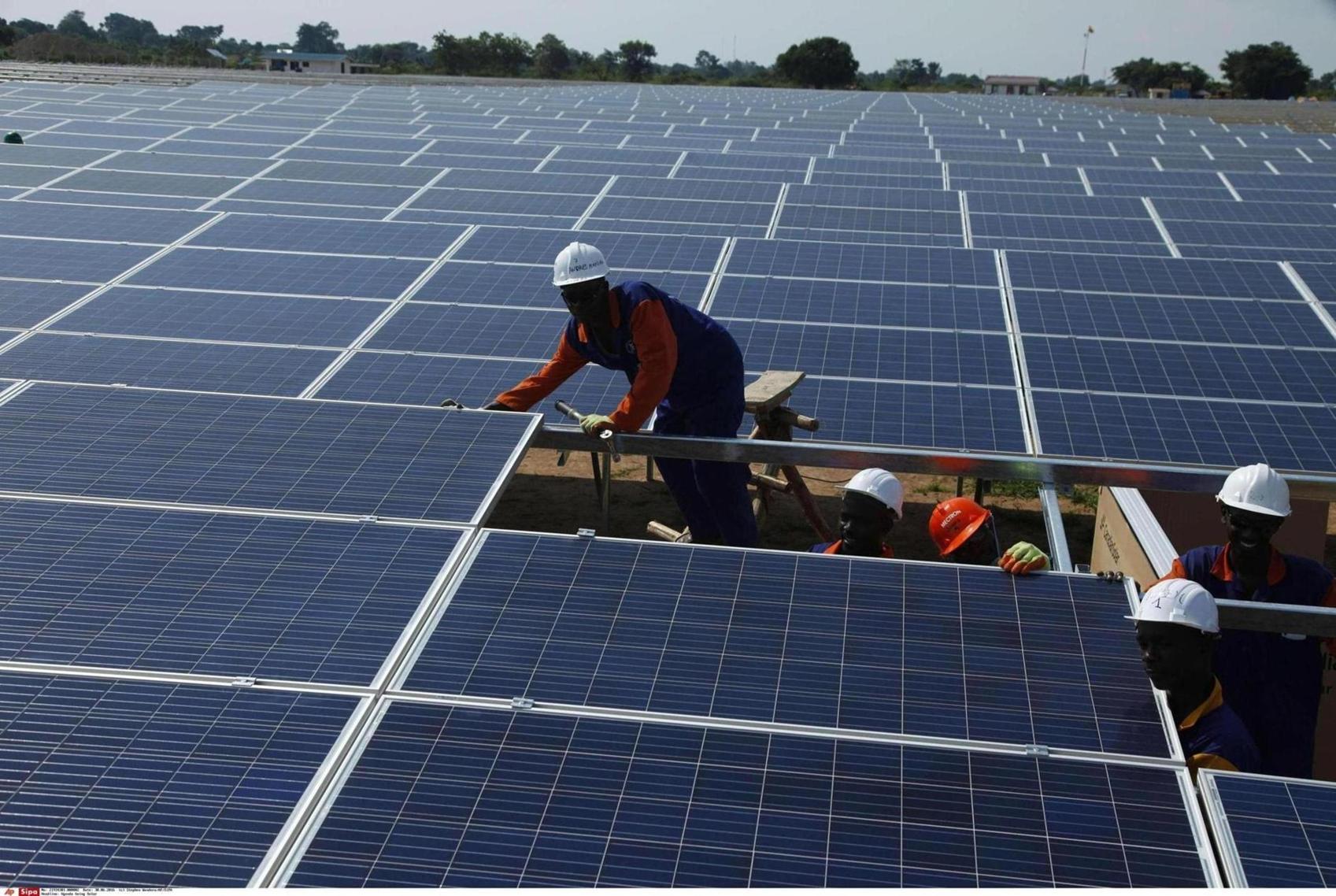Africa-Press – Rwanda. The potential is there for Africa to be powered mainly by renewable energy, creating jobs and raising people out of poverty in the process. In infographics, we explore the disjuncture between a clean, green future and the funding to achieve it.
In the same way that the continent went straight to smartphones, bypassing fixed-line telephones and desktop computers, will we soon see Africa powered mainly by renewable energies, having avoided the all-fossil-fuel phase?

In Kenya, as of this year, 90% of electricity already comes from sustainable resources, according to the country’s ministry of energy.
The continent has the greatest solar energy potential in the world: in 10 years, capacity has increased eightfold. Micro and mega solar-farm projects abound, as do promises of ‘clean’ financing. If successfully implemented, Africa’s energy transition could even boost continental GDP by 6.4% and the well-being index by 25.4% by 2050, compared to current forecasts, says a report by the International Renewable Energy Agency and the African Development Bank.
Investment hard to get
But there is still a long way to go for this scenario to be possible. Although Africa accounts for 20% of the world’s population, it received just 3% of energy investment by 2023, with almost three-quarters of that going to fossil fuels.

Why so little? Firstly, because the cost of capital can be two-to-three times higher for renewable energy projects in Africa than in advanced economies. Secondly, because projects are often deemed too risky due to the instability that prevails in many countries. Subsidies, concessional agreements and regulatory exemptions are ways of attracting private capital and kick-starting the transition.

Marie Toulemonde
For More News And Analysis About Rwanda Follow Africa-Press






